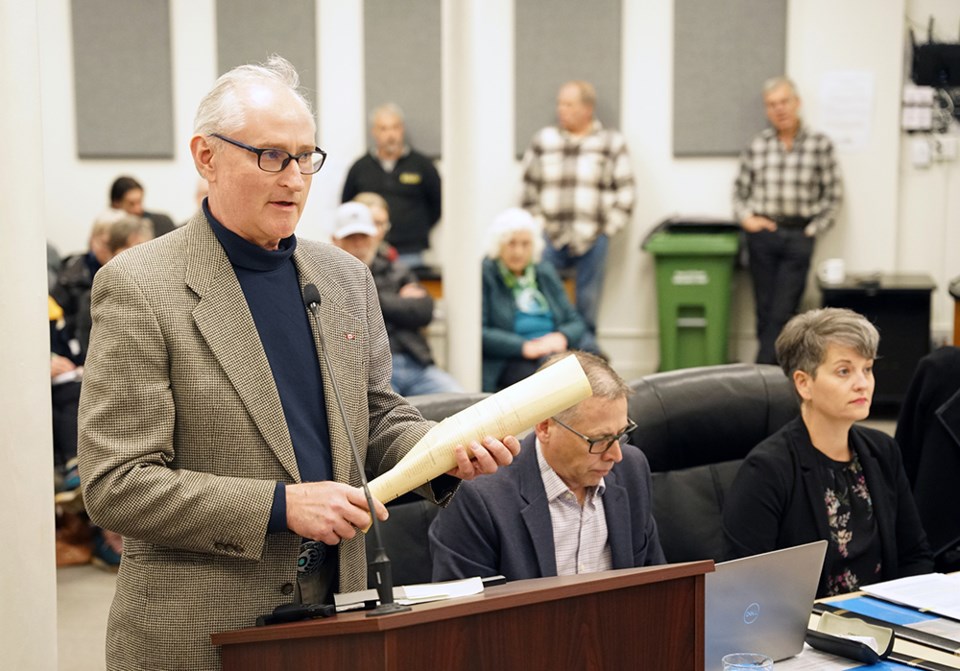Former Newfoundland and Labrador premier Brian Peckford, the last surviving signatory to the Canadian Charter of Rights and Freedoms, provided those in City of Powell River council chambers a history lesson on April 2.
City resident Robin Murray appeared as a delegation before the committee of the whole meeting in recognition of the 42nd anniversary of the signing of the charter of rights on April 17, and introduced Peckford, who appeared virtually in council chambers.
Peckford said the charter of rights and freedoms was part of a larger constitutional act that happened on April 17, 1982. He said it is called the Constitution Act, 1982 and the charter of rights is part of the act. He said the Constitution Act, 1982 contained 60 provisions, 34 of which are the charter of rights and freedoms.
“A constitution is a group of rules that a group of people have approved to be the rules that will govern how they operate as a country, in this case,” said Peckford. “They are a set of rules that people have agreed to determine the type of government that they have, how the government will operate, and so on.
“Canada came into being through the first constitution act, the British North America Act, in 1867. That was the first written piece that formed the constitution of Canada. The second written piece that formed the constitution of Canada was the one I was involved in and the one we’re talking about today.”
Peckford said the constitution is both written and unwritten.
“It’s very important for Canadians to realize the charter of rights and freedoms is because until 1982, all our rights and freedoms as citizens of the country were unwritten laws,” said Peckford. “What the charter of rights and freedoms did, and why it is so important, is that these freedoms were actually put into law and into the constitution.
“That’s a big deal, because between 1867 and 1982, citizens of Canada felt their rights and freedoms were being violated and had to rely on British common law, because we had come out of the British system. We were part of the British empire and part of the British constitutional tradition.”
Peckford said in developing the Canadian Charter of Rights and Freedoms, it was the first time that Canada, the nation, put into its written constitution the rights and freedoms that Canadians took for granted, even though they were dependent on unwritten British common law.
“It was thought that we should put that in writing in our written constitution to give it more guarantee, more solidity and more chance of succeeding and being there to protect every Canadian,” said Peckford.
City councillor and committee chair Rob Southcott said it was an honour to have a retired premier address the assembly, especially one who had been involved in such an historical event in Canada.
Mayor Ron Woznow asked Peckford what differences the charter of rights and freedoms made since 1982 in the way people communicate.
“One of the great positives coming out is that our whole system of the administration of justice has now become familiar with what exactly is written down in the constitution, and therefore, makes it far more certain in its future,” said Peckford.
Murray said there was one request, and that was to post a copy of the charter of rights and freedoms on a wall in council chambers. He asked how a copy could be framed and mounted.
Councillor Jim Palm made a motion that a copy of the Canadian Charter of Rights and Freedoms be added to council chamber walls in an appropriate location. The motion carried unanimously.
Join the Peak's email list for the top headlines right in your inbox Monday to Friday.



